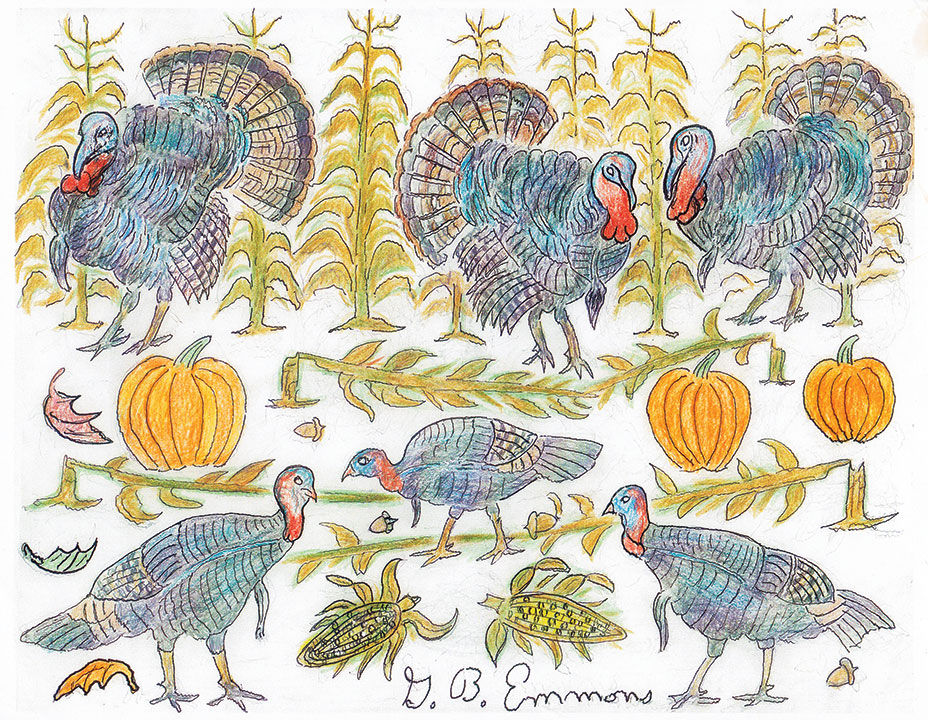Flocks of wild turkeys are being seen everywhere along the south shore in abundant numbers, even in suburban back yards after having been completely depleted from all of Massachusetts for hundreds of years.
In 1969 they were brought back and very successfully transplanted from Pennsylvania and nearby other states where they had also been revived from elimination due to over hunting and deforestation. U.S. Fish and Wildlife had found that the most effective method of transplanting was to bring them back from other areas, otherwise almost hopeless and impossible.
You can now easily find them around where you live by getting up early in the morning to look for them foraging around forest clearings under nut-bearing trees such as oak and hickory, easily spotted from your car window, as in my illustration.
Wild turkeys have become a more traditional, historic symbol domesticated as part of the traditional Thanksgiving feast since the pilgrims brought them to the new world in the Mayflower in the year 1620. They were not on the menu of the first celebration but were saved to breed and raise for future food for newly arrived settlers.
Originally found on this continent by Spaniards in Mexico, Turkeys were raised by ancient civilizations of Aztecs and Mayans for religious festivals several times a year because they represented a spiritual god producing a bountiful cornucopia for all of mankind.
The American symbolism of the turkey also took on a national significance when Abraham Lincoln declared it to be a national holiday in the year 1864. And it became a historical symbol of plenty when Norman Rockwell painted his famous Saturday Night cover illustration of “freedom from want,” showing a matronly cook serving a roast turkey to a smiling family around the dinner table.
It also became a media boost in public opinion later when several presidents awarded several turkeys slated for the White House oven pardons from the highest office in the land. Then young children in grammar school learned to draw turkey figures for seasonal cards for members of their families.
Now, more than four hundred years after the first celebration in the Plymouth Plantation, as we sit down at the festive table featuring a roast turkey to say grace and give thanks for the food we eat, as well as all the other blessings of life on this holiday, let us be thankful and blessed by the bountiful earth and almighty god in the heavens smiling down on the turkey we are about to appreciate even more after reading all about it.
By George B. Emmons
